

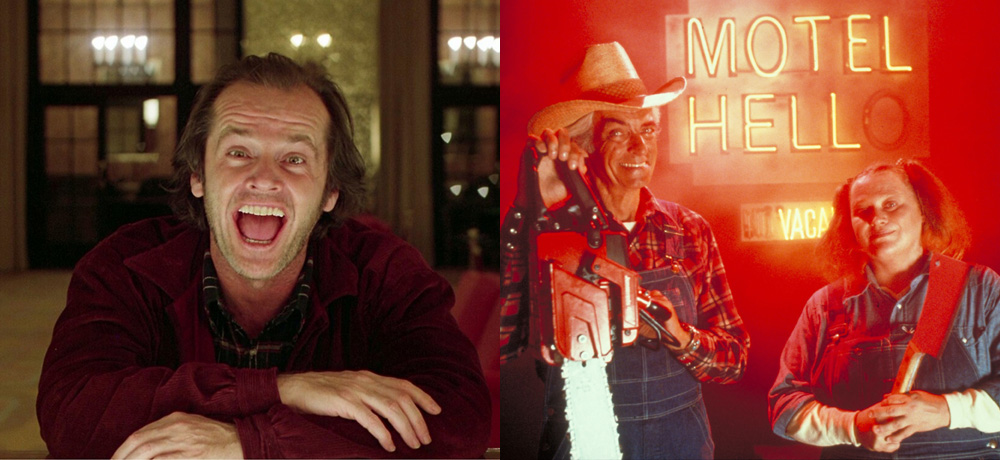
Welcome back, dear readers! We here at Daily Dead have been doing our best to honor the 40th anniversary of all the great horror and science fiction films that were released throughout the year 1980 over the last several weeks. Today we wrap up our celebration with several more voices from the realm of genre entertainment.
So, for our final Class of 1980 celebration, we will be featuring the likes of Barbara Crampton, Mike Flanagan, Travis Stevens, Kyle Gallner, André Gower, Phil “CM Punk” Brooks, Rebekah McKendry, PhD, Meagan Navarro, and Marc Gottlieb all discussing a variety of notable horror and sci-fi movies from 1980, including The Shining, Inferno, The Watcher in the Woods, Anthropophagus, Dressed to Kill, The Changeling, Motel Hell, The Empire Strikes Back, Alligator, and The Fog.
We do hope that you’ve enjoyed our ongoing Class of 1980 series this month and that is has inspired you to revisit many of the classic genre films that were released that year.

Mike Flanagan (Writer, Director, Producer)/The Changeling
For me, The Changeling really stands out as one of the most influential ghost stories in my life. Peter Medak's direction and George C. Scott's performance coalesce into a movie that is as downright chilling as it is emotionally resonant. This is cerebral horror, focused on atmosphere and tension instead of gore or thrills. And man, is it my cup of tea.
We must have watched this movie a dozen times while prepping Ouija: Origin of Evil. People have spent a lot of money over the years trying to deliver astonishing set pieces in haunted house stories, but I'd argue that the use of a simple ball bouncing down the stairs puts most of them to shame. That is the definition of terror, and it defined how I think about a "haunting."
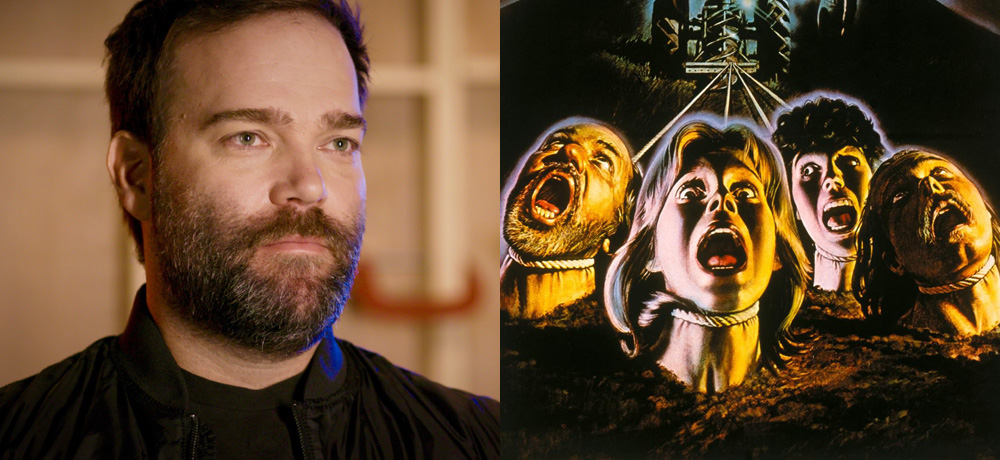
André Gower (Writer, Director, Producer, Actor)/Motel Hell
I get the question of, “What are your favorite horror movies?” a lot. And one of my go-to answers has always been Motel Hell, for a few reasons. As like most folks, it depends on where/how you see a film for the first time that imprints the memory and creates that connection. I didn’t see Motel Hell in the theaters (I was seven when it came out), but I remember seeing it, late at night, at a friend’s house. I can’t recall if it was a rental or on the super-awesome pay-service he had on TV, but from the moment I saw the failing neon sign blinking out to reveal the impending doom, I was in. I remember being so impressed by the cleverness of that little bit of creativity (again, I was young) and that is what stuck with me.
Then, to experience that spot-on campiness that came to identify that sub-genre and enjoy characters that were so outrageous you actually rooted for them and not the victims. Again, I was in. Over the years, I realized that my favorite horror films are NOT the iconic juggernauts that power the genre, rather the ones that comment on those giants. They are the parodies that end up not only presenting a satire of what those heavyweights represent, but also highlight the absurdity of the human condition. It’s the depraved absurdity. Or is it the absurd depravity? To me, that takes some effort... and probably some luck to actually make them good. I mean, c’mon... people sausage?!
What’s truly great about these films is that you get to revisit them over time and discover even more little gems of dialogue or great deliveries by the actors that set these films apart. To me, Motel Hell is the ultimate homage to, and ultimate commentary on Americana. It’s road trips, roadside motels, local farmers/innkeepers, local deputies, and chainsaw fights. To add to that American Dream ethos, somewhere during the summer of ’92, I’m watching a VHS copy of what is still one of my favorite movies, Pure Country (come @ me). My Mom walks in and comments, “Oh, that’s Rory Calhoun. He makes such a great cowboy, one of the best. He was a huge western icon, you know.” At that time, I didn’t know. Chalk one up for Dorothy.
The fact that we have so much to choose from in the horror genre is what sets it apart. No other classification of movies has the range of sub-categories. And it’s totally okay to really like some and not the others. Genre fans will still hang out with you if your favorite film isn’t the same as theirs because you can usually find something to connect with. So, when people ask me, “What are your favorite horror films?,” I always answer with Motel Hell, April Fool’s Day, and Shaun of the Dead. Sometimes I get the nod, sometimes I get the side-eye. If you don’t agree with me, that’s okay, because it takes all kinds of critters.

Barbara Crampton (Actress, Writer, Producer)/Dressed to Kill
Brian De Palma’s audacious thriller, Dressed to Kill, starts off with a beautiful and repressed Angie Dickinson, a housewife dreaming of having hot shower sex with her husband. She’s a woman unsure and unwilling to assert herself as it pertains to her own sexual desires. She makes clear this reflection, to her therapist Michael Caine, while also admitting she gives her husband what she thinks HE wants: adoring "oohs and aahs" during their passionless lovemaking.
She follows an intriguing man in a museum. At first, flirting, and then fleeing his advances, unable to commit to her own bubbling desires until he finally beckons her with the lone Isotoner glove which she dropped, from a bright yellow NYC cab. She then has a sensuous round of “Afternoon Delight” in the cab and in the stranger’s apartment. In an act of silent defiance to her humdrum life, she dials her home and promptly hangs up on her husband when he answers. Angie Dickinson as Kate Miller; gorgeous, unfulfilled cheater wife, is then brutally murdered in an elevator upon leaving.
The murder is witnessed by hooker Liz Blake, played by Nancy Allen. The opposing views of sex, of Angie’s and Nancy’s characters, and their expression sets a foundation for the film and its themes. The doctor/villain as played by Michael Caine has a secret desire of his own, one hidden even from himself. He wants to have a sex change and become a woman. His split personality of Bobbie is ripe for it. Yet, his male doctor side can’t fully come to terms with this and his attraction to both Angie’s and Nancy’s characters in a sexual way. He kills Angie to try and kill that part of himself. He feels guilt for his own wants and desires for a sex change.
The movie plays with repression, shame, and guilt, but it’s also highly entertaining and thrilling. Who is that person in the blonde wig? Along with the characters already mentioned, we have Dennis Franz as a no-nonsense detective and Keith Gordon as Angie’s son out sleuthing to try and catch the killer.
Michael Caine is ironically searching for himself, also in an attempt to capture the killer and make him/her/himself pay for the murder of his patient. I love how strong this film opens with a hot sexy shower scene (which actually means something to the story) and goes places which are really surprising. The museum scene is so memorable! I never suspected Michael Caine was the killer! The film is sexy, smart, and thrilling with great performances by iconic actors, and it is one of my favorite films from 1980.

Phil “CM Punk” Brooks (Actor, Professional Wrestler, Writer)/The Empire Strikes Back
“There is no such thing as a perfect movie.” This quote does not apply to 1980’s The Empire Strikes Back, and I assume if you say such a thing, you’ve never seen the movie. 1980 had its fair share of films, but Empire clearly rests comfortably ahead of the pack, and it’s not even close. I’m tasked with writing about this perfect film and I’m finding that I cannot possibly encapsulate how great it is with just my words. But that doesn’t mean I’m not going to try.
I’m always in awe of the conflict throughout this film. It’s just everywhere. The Empire vs. the Rebellion, Sith vs. Jedi, Luke vs. Wampa, Luke vs. Vader, Luke vs. Luke! You get the picture. The seemingly British imperial officers don’t even like the bounty hunters assembled by Darth Vader to hunt down the Millennium Falcon. Which brings me to my next point: the characters.
Empire does such great world building, often in a short amount of time. Take the bounty hunter scene, for example. It’s only about 45 seconds long and establishes that the bad guys think THESE guys are the worst. Holy shit! As a kid watching this for the first time, I immediately wanted to know more about Bossk, IG-88, Dengar, and Boba Fett (and I guess even Zuckuss). That’s right, Boba Fett instantly became the coolest, most kick-ass character in 40 seconds with no dialogue.
The Empire Strikes Back just has everything. Conflict, characters, drama, and amazing action scenes. Planet Hoth. Dagobah. Carbon freezing. Good lord, this movie rules. I feel like I’m failing trying to tell you how awesome this movie is. Cloud City? Jesus Empire, can you slow down for just one second so I can process all of this? No? Cool, cool. I see you, Empire.
Possibly the best part of The Empire Strikes Back is the way the movie ends. Such a downer, right? Yet, amidst Luke finding out his mortal enemy and murderer of the man who taught him the ways of the force is his father, losing his hand, and Han being frozen and carted away by a super cool, badass bounty hunter, there is hope. You certainly want to see what happens next. Your heroes are down, but are they out? You only had to wait three years to find out, and it was a better place because there was no Internet to ruin shit. I love Empire so much in ways that I cannot describe. I’m just going to go watch it and feel like a kid again.
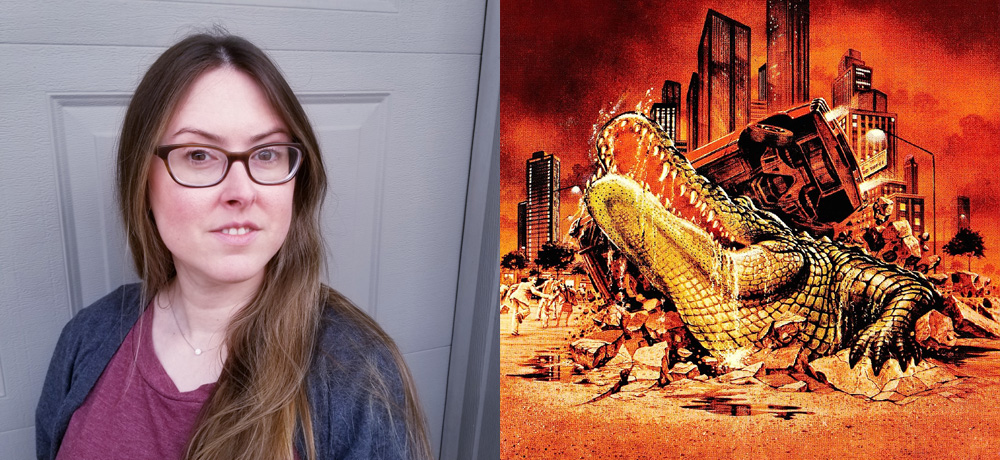
Meagan Navarro (Film Writer)/Alligator
Of all the well-regarded and classic horror films to emerge from 1980, Alligator remains one of the year’s best and yet most overlooked. Using the infamous urban legend about baby alligators flushed down toilets to grow up mean in the sewers as the setup, director Lewis Teague transforms a schlocky B-movie premise into a clever piece of aquatic horror fun with a wry sense of humor. Pitting the soulful and wizened Robert Forster against an intelligent giant beast, shattering a few horror taboos along the way, makes for an insanely infectious creature feature that deserves more love.
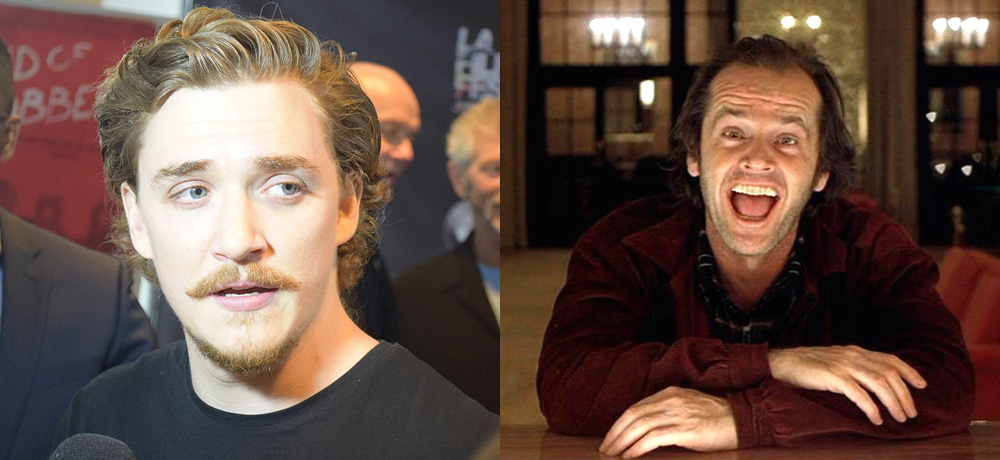
Kyle Gallner (Actor, Producer)/The Shining
The first time I saw The Shining was when I was filming A Nightmare on Elm Street. They would always call all of the actors in at the same time no matter what time we were due on set, and Thomas Dekker had brought in The Shining with him to watch that day. I told him that I had actually never seen the movie, and he couldn’t believe it, so we sat in his trailer and kicked it on. About ten minutes in, we got a knock on the trailer door saying we had a 15-minute warning to be on set. We knew they were full of it because every time we had a 15-minute warning that usually meant we had at least an hour.
Cut to the credits rolling and they still had not come back for us. Thomas turned the lights back on and looked at me. I was a bit frozen. The movie creates such an intense feeling of dread and madness, and it was so incredibly shot and directed, plus the imagery is iconic and the acting was next level. Jack Nicholson’s performance shook me up. It is one of those performances that just sticks in your head and stays with you long after the credits roll.
I would like to thank Thomas Dekker for catching me up on a film I should have watched years before that and for Nightmare for always running behind. I’m pretty sure Dekker and I proceeded to have a 30-minute dance party before they finally called us in that day.
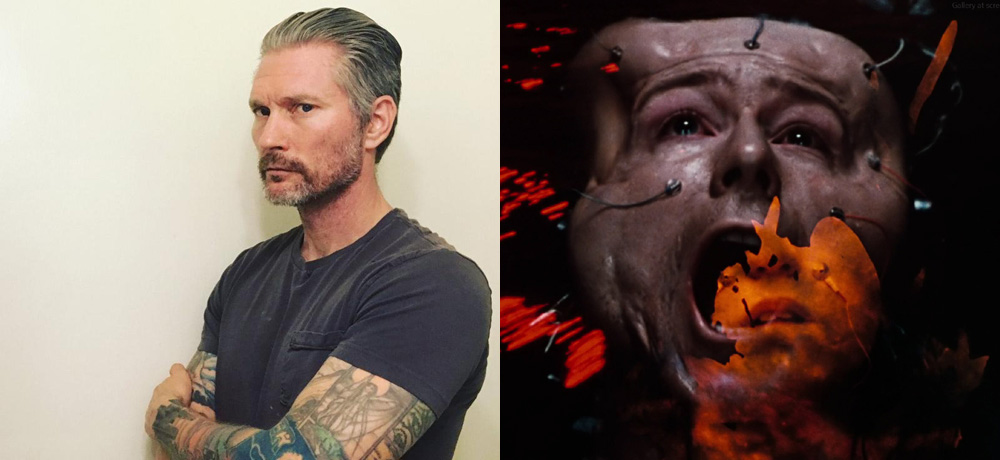
Travis Stevens (Writer, Director, Producer)/Altered States
My initial experience with Altered States was a disappointment. Lured in by the VHS artwork, what I was expecting was a straightforward sci-fi horror film akin to The Fly or The Thing, where everything that happened on screen was literal and easy to understand. Thankfully, Ken Russell is a far more ambitious, intellectual, and artistically motivated filmmaker than I was as a teenage movie fan. From the opening shot (and title sequence) he puts us and Dr. Eddie Jessup (William Hurt, in his first role) in a very specific emotional space that allows for an exploration of male hubris that is far more interesting to me now (as an adult) than the simple monster madness I craved as a kid.
The selfish drive of Eddie Jessup, his romantic pursuit of Emily (Blair Brown), the unbalanced nature of that relationship (always centered on him, his past, and his needs), his undisciplined and reckless approach to his research, and his refusal to take responsibility for his actions is a form of masculinity concentrated into a dosage as powerful as the Ayahuasca he ends up consuming.
And then there is the glorious imagery. That specific kind of jagged weirdness that only Ken Russell can come up with. A filmmaker who can film an everyday household object like a space heater and use it to motivate visions of saints and angels and even Christ himself… in the middle of a sweat-drenched sex scene. The editing and photography tricks used to stretch reality in 1980 are still bold and breathtaking today. And the unexplainable in Altered States remains just as intriguing as the overt commentary on male arrogance.
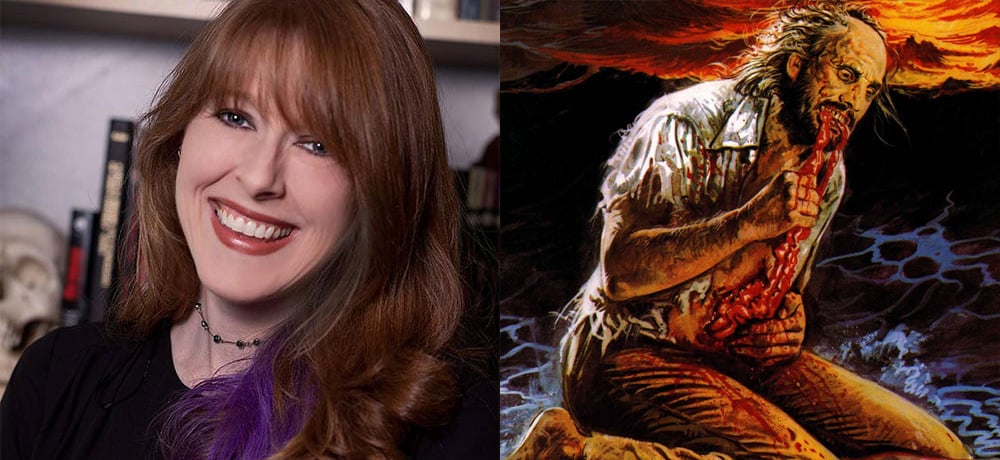
Rebekah McKendry, PhD (Writer, Director, Producer, Podcaster)/The Watcher in the Woods and Anthropophagus
Watcher in the Woods: In the late ’70s and early ’80s, Disney experimented with some downright scary live action films. My parents rented Watcher in the Woods for me when I was about four years old, gathering that Disney would only provide wholesome kid content. The movie melted my young mind with its twisted, pastoral tale of a supernatural childhood game gone wrong. To this day, I’m haunted by images of white blindfolds and the phrase “narek.” This one is pure kinder-trauma!
Anthropophagus: From the annals of the notorious Italian cannibal boom, Anthropophagus aka The Grim Reaper feels like part travelogue and part slasher all blended with the extreme and shocking gore that made this historical sub-genre so infamous. Helmed by the prolific Italian filmmaker Joe D’Amato, this movie boasts a banquet of carnage and entrails, all leading up to one of the most jaw-dropping scenes in horror history, which earned the film a spot on the legendary Video Nasty list.
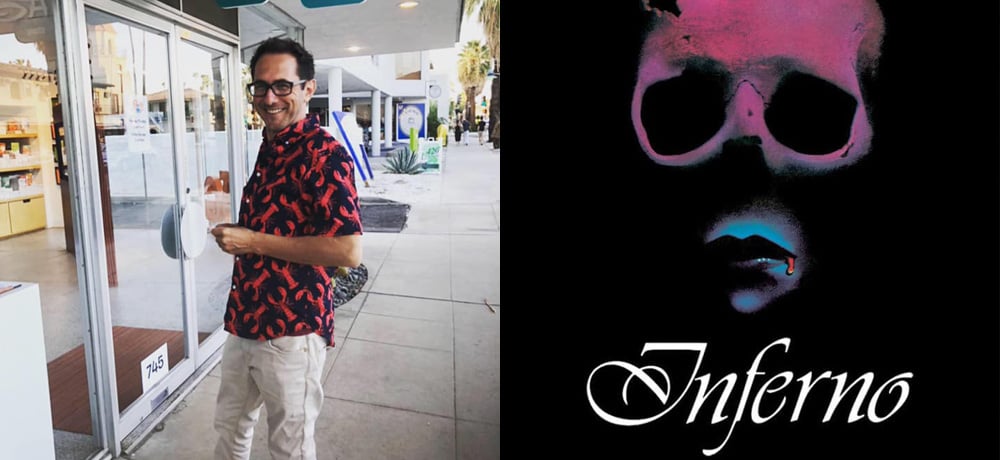
Marc Gottlieb (Screenwriter)/Inferno
Inferno is pure, uncut Argento. He ups the ante on everything you loved (or perhaps hated) about Suspiria in this sequel to his 1977 masterpiece. I would go as far as to say that it's the film you could point to as the most “Argento” film he ever made. It's the perfect bridge between Suspiria and Tenebrae because it combines the ethereal dream logic of the previous film while dabbling in the giallo conventions that he cut his teeth on and would later revisit with full force in the latter.
Like most sequels to unexpected box office hits, Inferno works to broaden the world only touched upon in Suspiria, expanding the mythology of The Three Mothers and the death grip they have come to hold on mankind through the power of witchcraft. The first, Mater Suspirorium, we already met at that dance academy in Freiburg. But it's the other two, Mater Lachrymarum and Mater Tenebrarum, who are capable of even greater damage according to Varelli, an architect who discovered their true identities after building them domains in three cities: Freiburg, New York City, and Rome. This second episode takes place in New York and the apartment building where Mater Tenebrarum possibly dwells.
Argento swings big from the get-go with the film's most famous sequence in which our (supposed) protagonist, Rose, descends into an underwater ballroom through the cellar of the building after she drops her house keys into a drain grate. It only gets more grandiose and strange from there, as the secret of Mater Tenebrarum is pursued and the body count increases, much of it at the hands of a mysterious assailant (or assailants) slaughtering anyone who comes too close to finding out the identity of the “youngest and cruelest” of the Three Mothers.
Tenebrae is the film lauded as Argento's triumphant return to the giallo sub-genre, but that would be selling Inferno short. Your standard giallo typically offers up multiple suspects as to whom the killer might be, but this time, Argento turns this trope upside down, focusing on the protagonist instead as he all but switches lead characters just about every 20 minutes or so. It's a brilliant move at keeping the audience guessing at what is happening in this film and why, and whose story is this anyway? Now look, no one has ever accused Inferno of making a hell of a lot of sense, it's the same gripe that some have about Suspiria, (though I insist both films have a clear narrative which ultimately emerges with multiple viewings). What makes Inferno great is that it has Argento using every weapon in his creative arsenal, focused more on leading us into an hallucinogenic fantasia than he is with the constraints of continuity and coherence of plot. All the better to paint a landscape where the influence of evil permeates in the absolute, and horrible things can happen anywhere, at anytime. A cab ride can be as terrifying as an attack of hundreds of flesh-eating rats spilling from a drain pipe.
While it was his four celebrated gialli of the early to mid ’70s that gained him worldwide prominence, Argento's affinity for the surreal blossomed with Suspiria and truly realized full bloom with Inferno in 1980. It would be a powerful influence on his work throughout the rest of his career, particularly in Phenomena, combining the supernatural with the giallo to even greater effect. Inferno is an important component of Argento's output, one that remains inventive, extraordinary, and divisive 40 years later.
---------
Visit our online hub to catch up on all of our Class of 1980 retrospectives!
*Photo credit for Kyle Gallner: Mingle Media TV.